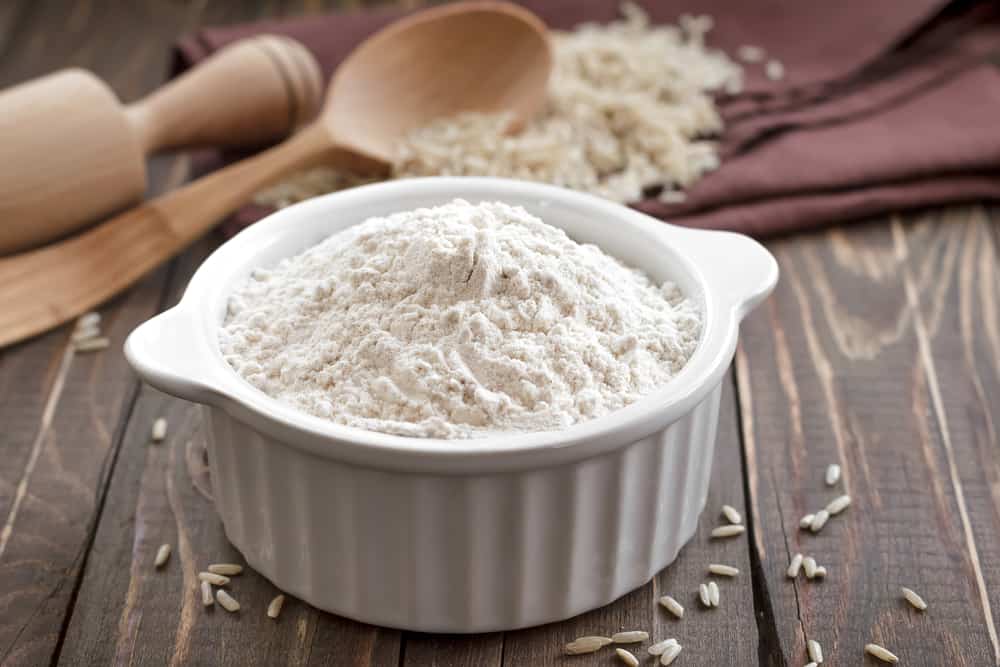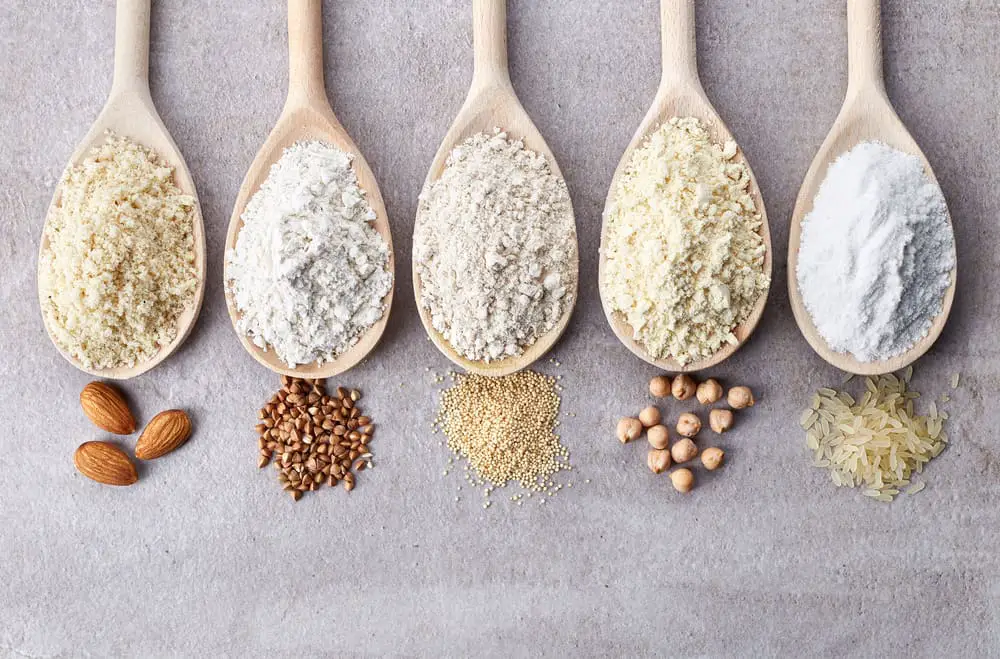Rice flour is one of the most versatile and popular flours out there. It has many uses, including baking, cooking, or even as a thickener in sauces.
What is Rice Flour?
Rice flour is a type of flour made from ground rice. It is usually made from either white or brown rice, but some blends include other types of flour, such as sorghum, millet, or bean flour. It is one of the most popular flours because it is light and doesn’t alter the taste or texture of your baked goods, and can easily be substituted for other flours in many recipes.
Is Rice Flour Ground Rice?
Rice flour does not contain any actual ground rice. Instead, it is made by grinding down whole white or brown rice grains into a fine powder.
This flour is sometimes confused with ground rice, but they are not the same thing. Ground rice can be made by grinding uncooked rice (white or brown) in a food processor until it has the consistency of traditional “rice.”
While this may seem similar to making your own homemade white or brown rice flour at home, you should note that ground rice is often made from partially-milled grains and thus may still contain traces of bran which can affect the texture of your baked goods. Furthermore, ground rice is coarse, while the flour is more refined.

What is Rice Flour Used For?
There are many different ways to use this versatile flour. It’s commonly used in breading or batter for fried foods, such as chicken, fish, or onion rings. It can also be used to make pasta, pizza crusts, cookies, and other baked goods. Additionally, it is an excellent thickener for sauces or gravies and can even be used in place of cornstarch. Here are some popular ways to use this flour.
Breading and frying
Rice flour is a great way to make gluten-free fried foods. Rice bran oil (high in antioxidants) is usually recommended when cooking with this flour because it has a milder taste than other oils such as olive oil.
Baked Goods
It can be used in place of all-purpose (wheat) flour. It does not contain gluten, which means it won’t make your baked goods chewy as traditional flours do. However, some recipes will require xanthan gum or guar gum to replace the binding effect that gluten provides; without these, your baked goods may crumble easily. So be sure to check the recipe before you start.
Sauces and Gravies
Rice flour works excellent as a thickener for sauces or gravies. Just mix it with some cold water until dissolved, then stir into your sauce while cooking on the stovetop. It’s best to make small batches of this flour at home because it can spoil quickly if not stored properly.
Pancakes and Waffles
If you’re looking for a breakfast option, rice flour pancakes or waffles are a great choice. Mix it with other flour (cornstarch, tapioca starch, or potato starch) to create a more consistent batter. You can also add some xanthan gum or guar gum if you want a chewier texture.
Is Rice Flour Better Than Regular Flour?
Rice flour is an excellent substitute for traditional wheat flour, but it is NOT superior to regular flour as a substitute. In a nutshell, it’s a close second to regular flour. While rice flour has some health benefits over all-purpose (wheat) or pastry (soft wheat) flours because of its low gluten content and high fiber content, you should be more careful when baking with it. Because it is very different from traditional flour, be sure to experiment with it before using it in your family’s favorite recipes.

Is Rice Flour Healthy?
Rice flour contains no gluten and thus does not contain the wheat protein that causes celiac disease or non-celiac gluten sensitivity reactions. As a result, it’s good for health and is often recommended for people who have gluten sensitivities. It is also a good source of dietary fiber, vitamin B, and minerals such as magnesium, phosphorus, and selenium.
A Healthy Source of Protein
Rice flour contains around eight grams of protein per half-cup. This is approximately the same amount of protein that you would find in a large egg–not too shabby!
Healthy Source of Dietary Fiber
This awesome flour contains around five grams of dietary fiber per half-cup. This is almost double what most other grains provide (such as wheat, corn, or oats).
Source of Healthy Fats and Magnesium
Rice bran oil, often used when cooking with rice flour, is a good source of healthy fats and minerals such as magnesium and phosphorus.
Rich in Fiber
Rice flour is a good source of dietary fiber, which can help to regulate digestion and bowel movements. Additionally, fiber is known to help regulate blood sugar levels and reduce the risk of heart disease and other chronic conditions.
Is Rice Flour Bad for Weight Loss?
While this flour does not contain gluten, it is still high in carbohydrates. For this reason, it is not ideal for people who are trying to lose weight. However, if you are looking for a healthy and delicious way to add extra fiber to your diet, it’s a great option.
Historical Background of Rice Flour
This ancient flour can be traced back thousands of years to Asia. It is believed that it was first used in China, where it was made by grinding raw rice into a fine powder. It then spread to other parts of Asia and eventually Europe and America.
Interesting Tidbits
Did you know that the first recorded use of rice flour was over 2000 years ago in China? Additionally, it is often used to make “rice paper.” Rice paper is a delicate, translucent paper made by soaking thin sheets of rice flour in water until they are soft. It can be used for different purposes, such as wrapping food or printing on.
Is Rice Flour Gluten-Free?
Rice flour does NOT contain gluten. Gluten is a type of protein that occurs naturally in wheat, rye, and barley. It gives dough elasticity and helps them maintain their shape during baking. This flour contains no gluten whatsoever; it has the complete opposite texture. Since it is gluten-free, it is a popular substitution for people with gluten sensitivities.
How Is Rice Flour Made?
Brown rice, sweet rice, and white rice are the three types available. The white rice originates from brown rice. This happens when the husk is removed. The rice is ground into a very fine powder to make flour.
There are two ways to make this flour: commercially or at home. Commercially, it is made by grinding rice into a fine powder. This process can be done with various types of rice, including brown, sweet, and white.

How To Make Rice Flour at Home
The easiest way to make this flour at home is by using a food processor. Simply add one cup of raw, uncooked rice to the food processor and pulse until you have a fine powder.
What Does Rice Flour Taste Like?
This flour has a very mild, almost undetectable taste. This makes it an ideal addition to any recipe that adds some extra fiber and nutrients. You may not even be able to tell the difference when using it instead of traditional white flour.
What Does Rice Flour Smell Like?
It has a very faint, sweet smell that is not overpowering. This makes it the perfect choice for baking recipes that require little to no flavor alteration.
What Are Some Substitutes For Rice Flour?
If you are looking for a substitute, there are a few different options. One option is to use almond flour or coconut flour. Almond flour is made by grinding almonds into a fine powder. Coconut flour is made by drying and then grinding the meat of coconuts. Both of these substitutes work well in recipes that call for rice flour.
Another option is to use chickpea flour. Chickpea flour is made by grinding dried chickpeas into a fine powder. It has a slightly nutty taste and texture, making it a great substitute in savory recipes.
